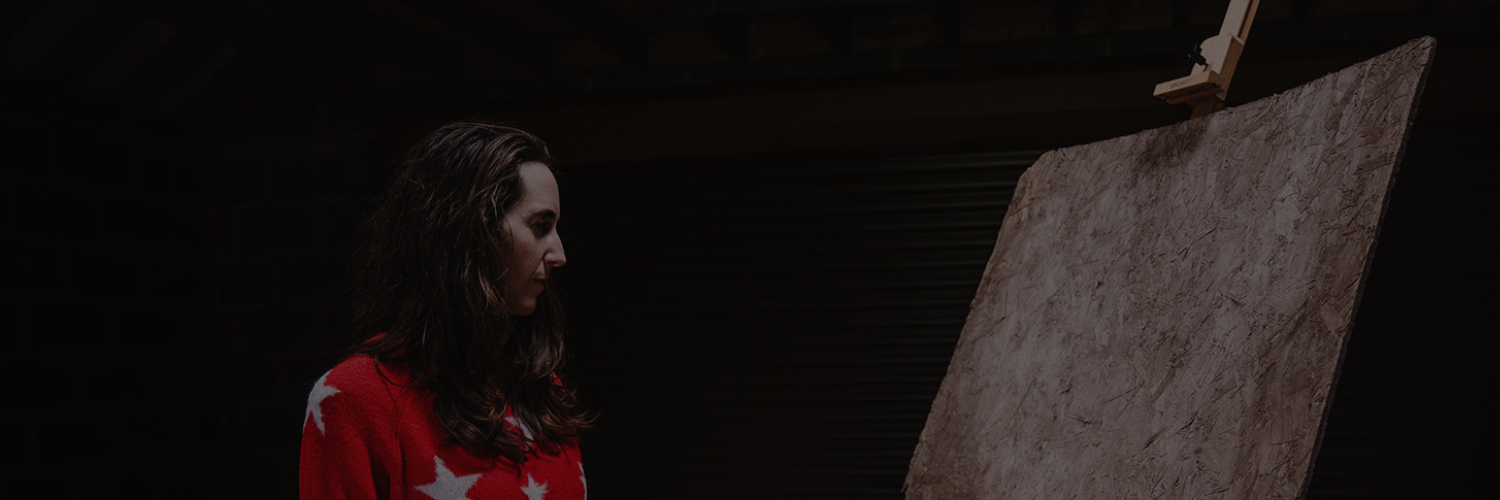As artists we’re often working alone for long periods of time, juggling studio practices with paid employment, freelancing and life responsibilities. All of this can really take its toll on our mental and physical health.
There’s a ripple effect on various aspects of both the professional and the personal life that lasts for years.
In my case, getting back into the swing of things after taking time off with my heart, I’m still finding emails left unanswered from years ago and wondering if it’s now too late to send out a reply or if it’s a bridge too badly burned.
Here are some of the methods I’ve found helpful returning to teaching art:
1. Open Communication:

It sounds easy however it is really, really hard explaining to colleagues and managers what support you need. Pride has to take a backseat in order for this to work. Being open with people makes the working relationship easier, especially if you tell people what to watch out for when you’re struggling.
Sharing your experience might get you some snide comments, however it will also gain you a lot of cheerleaders, often in unlikely quarters. Sharing my own health struggles has led to people being more open about theirs. It’s given everyone permission to talk about what adjustments they need for conditions they’d previously hidden.
Be clear about what accommodations you need and don’t feel bad if you need to adjust these as you go. It might take a few weeks back in the job before it’s clear to you what you need, there’s no time limit on asking for help.
2. Establish Boundaries:

You don’t have to compete with the previous version of yourself. Let colleagues know what workload, deadlines and stressors you can handle right now. Be realistic to manage your own and others’ expectations. Set review dates so the entire team know whether this is a permanent or temporary accommodation.
If you’re teaching and can get back into this part time or with an Arts Workshop or Teaching Assistant to help you, take the help. It will give you a boost knowing someone else if there to lighten the load.
3. Gradual Return:

Work with your employer to plan a gradual return to full-time hours. This may involve starting with reduced hours or a modified schedule to ease back into your professional responsibilities. Gradual reintegration allows you to rebuild your stamina and confidence over time.
If you’re a Sole Trader apply the same rules to yourself, you might need to adjust client expectations and financial goals to reflect the differences in responsibilities. Reframe the mindset, if you made it into the studio for an hour that’s an hour more than last week!
4. Self-Care at Work:

Everyone should be prioritsing this in the workplace!
Simple things such as taking moments to breathe, short breaks or quick walks can help manage the daily stress. If you have the option to use a quiet/designated space do so. A corner of my studio is dedicated to positive prose, poetry and artwork postcards that regenerate me.
5. Seek Professional Support:

Getting support from professionals as you transition back to work is crucial. Whether it’s the hospital or community team, a counselor or the GP, ask for advice and strategies on coping with the change.
The support is there, with charities like Mind running Visual Art focussed programmes to improve mental health. If you’re not ready to commit to you practice on your own again, a structured programme could really help bridge the gap.
6. Educate Others:

All illness carries a stigma, mental illness most of all. Share resources with others to promote better understanding of the challenges disabled workers face.
There’s a balance between educating and preaching. In educating others sometimes we forget that they’re also dealing with hidden conditions and mental health challenges.
My rule is that if it comes up I talk about it and answer questions, while still maintaining my personal boundaries.
7. Set Realistic Goals:

Break down your tasks into manageable goals and prioritise them based on importance. Establishing realistic expectations really helps you feel more in control of your life.
Don’t take on too much.
8. Build a Support Network:

Also applicable to literally everyone! Finding allies and advocates makes a massive impact. We spend a lot of time working, so it’s important to feel seen and heard.
Returning to work after a health crisis requires a lot of self-compassion. By fostering open communication, setting boundaries and engaging in self-care, you can navigate the ripple effect of this challenging experience and rebuild a fulfilling and sustainable professional life.
How have you navigated returning to work? Let me know in the comments of get in touch via Instagram. I love to hear from you!
REFERENCE LINKS
Mental health – NHS (www.nhs.uk)
Get help | Mental Health Foundation
Getting the support you need (macmillan.org.uk)
10 tips for returning to work after a heart attack – BHF
Time Off Work For Anxiety & Depression UK | Returning to Work Guide (safeworkers.co.uk)
6 mistakes I made when I went back to work after a mental breakdown | Metro News
Returner toolkit: helping you back to work – GOV.UK (www.gov.uk)
CHARLIE KIRKHAM NEWSLETTER
Sign up for free and be the first to get notified about updates.





Leave a comment